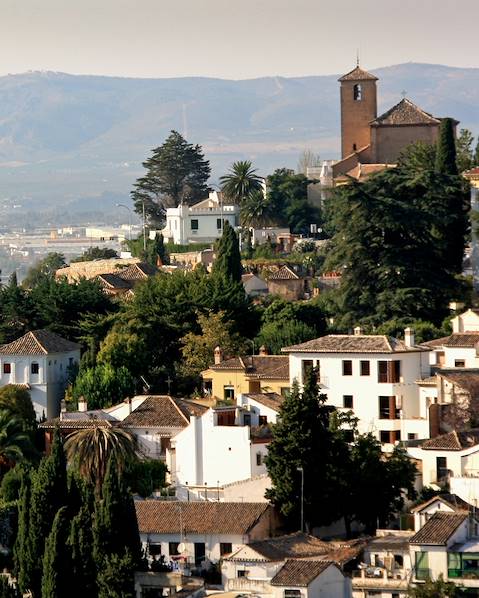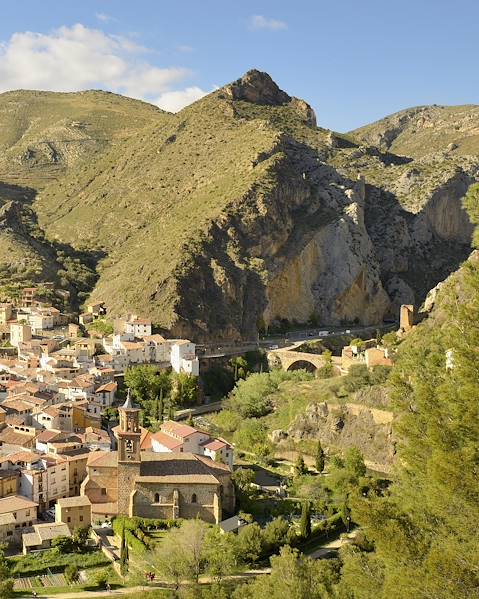Transport in Spain is efficient and well-connected. From modern metros and old-school trams spanning major cities, to long distance trains traversing striking countryside and coast, getting around the country is a breeze. Here’s our guide to navigating Spain, the land of flamenco, tapas and siestas. Vamos!
By Plane
While not the most eco-friendly option, if you’re looking for a convenient and efficient way of exploring Spain, you can travel by plane. There are more than 40 airports, all of which are managed and controlled by the Spanish government through the state-controlled company Aena. Although many of these airports have regularly scheduled flights by airlines such as Easyjet, Ryanair, Iberia, Air Europa and Vueling, the most frequent flights are to and from Madrid’s Barajas Adolfo Suarez Airport and Barcelona’s El Prat Airport. These are the two largest airports in Spain and offer the best connections nationally and internationally. Except for the Canary Islands, all domestic flights are shorter than two hours. To give you an example, a flight to Madrid from Barcelona takes just over an hour, compared to a six-hour train journey or an eight-hour drive. This time-saving aspect allows you to maximise your reach and make the most of your trip.
By Train
For the more sustainably-minded, Spain has an extensive train network that connects every nook and cranny of the country. This efficient and reliable system, operated by Renfe, is the backbone of Spain’s public transport network. Alta Velocidad Española (AVE) trains are the high-speed trains that whisk you between major cities in a flash, complete with premium seats, onboard Wi-Fi, drinks, snacks and reclining leather seats with power sockets. At the other end of the spectrum, visitors can combine sightseeing and travel by boarding the regional trains that wind through scenic landscapes. Not to mention the iconic Cercanias trains that connect suburban areas to city centres, making commuting a cinch. While staying in the cities themselves, Spain’s metro systems are a fantastic option. The quickest way to get around major cities like Madrid, Barcelona, Bilbao, Malaga, Seville and Valencia is through the local underground railways. These trains become crowded during peak hours, but help travellers reach their destinations easily. Spanish metros are also known for their cleanliness and reliability. Metro tickets and passes let you travel on all types of public transportation, from city buses to suburban trains.
By Car
Spain is ideal road trip territory. From the sun-soaked beaches of the Costa del Sol to the charming cobblestone streets of Andalucia, Spain offers up breath-taking sights that are best experienced on four wheels. Firstly, renting a car in Spain is straightforward. The islands, most tourist towns and major cities like Madrid, Barcelona and Malaga have numerous car rental companies offering a range of vehicles to suit your needs. Just make sure you have a valid driver’s license and a credit card and you’ll be hitting the road in no time. With regards the roads, Spain boasts a well-maintained network that will help make your journey smooth and enjoyable. The motorways, known as autovias or autopistas are well-marked, well-paved and, in places, offer stunning views of the surrounding landscapes. Toll roads are common, so keep some spare change handy. And, contrary to social media tales, driving safely while shirtless or in flip-flops, while not recommended, will not get you fined.
By Bus
Buses are another popular and convenient mode of transport in Spain, connecting major cities, towns and tourist destinations. Companies like ALSA, Avanza and Socibus offer a range of routes that cover Spain’s big hitters and hidden gems. One of the greatest advantages of exploring Spain by bus is the opportunity to enjoy the stunning scenery along the way, without having to worry about navigating the unknown roads. From the rolling hills of the Basque Country to the picturesque vineyards of La Rioja, every mile travelled offers new views. Plus, with comfortable seats and air-conditioned coaches, you can kick back and relax. Alternatively, strike up conversations, share travel tips and meet fellow visitors and locals.
By Ferry
Ferries are another popular mode of transport in Spain and are used to reach different ports and islands. The biggest ferry operators are Naviera Armas, Balearia, Transmediterranea, FRS, Fred Olsen Express, Grimaldi, and GNV. High-speed ferry links are available between the Spanish mainland and the Balearic Islands.
By Taxi
Taxis can be a good way to get around, especially within cities and towns. Spanish taxis are easily recognisable with their distinctive colours - usually white with a shaded stripe on the side. You’ll find taxi ranks at major transportation hubs, such as airports and train stations, and in popular tourist spots. Additionally, you can hail a taxi on the street by looking for the green light on top of the vehicle. Taxis in Spain are metered, ensuring that you pay a regulated fare for your journey. The rates may vary depending on the location and time of day, but they’re generally reasonable. If you’re lucky, you’ll get a driver who’s happy to share their knowledge, providing recommendations on local attractions, restaurants and secret spots. In recent years, a few ride-hailing apps like Cabify have also popped up, offering convenient booking and payment through your smartphone. Simply open the app, plug in your location and an estimated wait time will appear. You can even get ahead of the game and reserve a taxi in advance by entering your future pick-up time and location.
Alternative Types of Transport in Spain
To truly immerse yourself in Spanish culture, why not try different modes of transport that reflect the local flavour? In Barcelona, hop on a Vespa or a bicycle to explore the city’s vibrant streets, or take a leisurely stroll along the famous Las Ramblas. As Spain embraces sustainability, Madrid is leading the way with electric scooters and bike-sharing programmes, providing eco-friendly alternatives for short trips. In Seville, immerse yourself in the city’s romance by riding a horse-drawn carriage through the charming old town. And if you find yourself in Valencia, don’t miss the chance to ride a traditional tram, which adds a touch of nostalgia to your journey.

















